Jun 26, 2015
Allegra Fuller Synder Talk at the 2015 IX Symposium
Posted by Odette Bohr Dienel in categories: architecture, chemistry, education, engineering, nanotechnology, science, sustainability
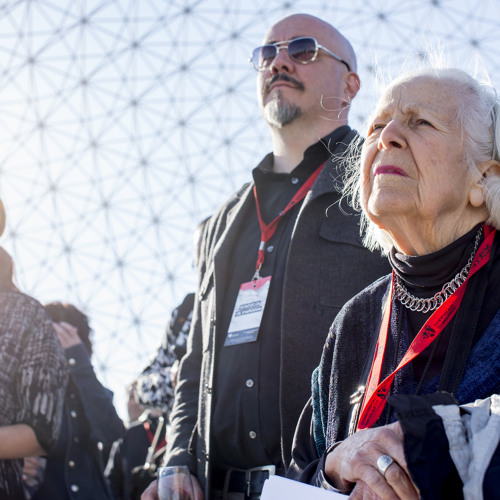
We are quickly approaching the point at which medical (and industrial) nanotech lives up to the hype!
Three different DNA nanostructures assembled at room temperature in water-free glycholine (left) and in 75 percent glycholine-water mixture (center and right). The structures are (from left to right) a tall rectangle two-dimensional DNA origami, a triangle made of single-stranded tails, and a six-helix bundle three-dimensional DNA origami (credit: Isaac Gállego).

” “Following these rules, we’ve demonstrated that we can make all the universal logic gates used in electronics, simply by changing the layout of the bars on the chip,” said Katsikis. “The actual design space in our platform is incredibly rich. Give us any Boolean logic circuit in the world, and we can build it with these little magnetic droplets moving around.”
Tag: design
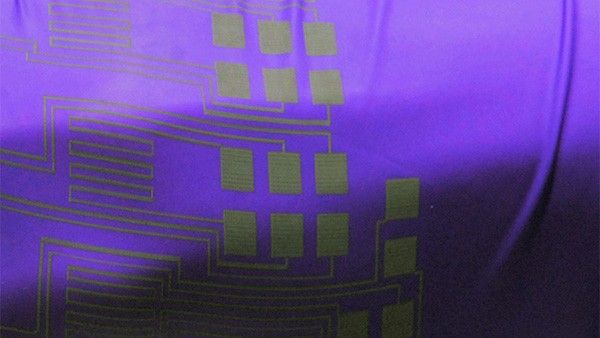
Researchers at Purdue University have shown how standard inkjet-printers can be employed to produce flexible electronic circuits from liquid-metal nanoparticle inks. This simple printing solution promises faster, cheaper, and easier production of stretchable, bendable electronics for clothing, soft robotics, and wearable devices. Read More
By Colin Jeffrey — Gizmag
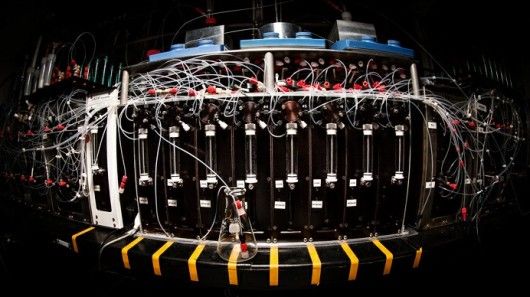
The synthesis of complex small molecules in the laboratory is specialized and intricate work that is both difficult and time-consuming. Even highly-trained chemists can take many years to determine how to build each one, let alone discover and describe its functions. In an attempt to improve this situation, a team of chemists at the University of Illinois claim to have created a machine that is able to assemble a vast range of complex molecules at the push of a button.
A specific class of structures, complex small molecules are readily found in nature and are intrinsic to research in a wide range of scientific fields. In medicine, for example, many of the latest medications have been derived from the manipulation of small molecules. In the biological sciences, small molecules are often used to help reveal the interior mechanisms of tissues and cells. Even non-organic electronic technologies such as semiconductors, including solar cells and LEDs, require the creation and use of these miniature assemblies.
Read more
Victoria Turk — Motherboard
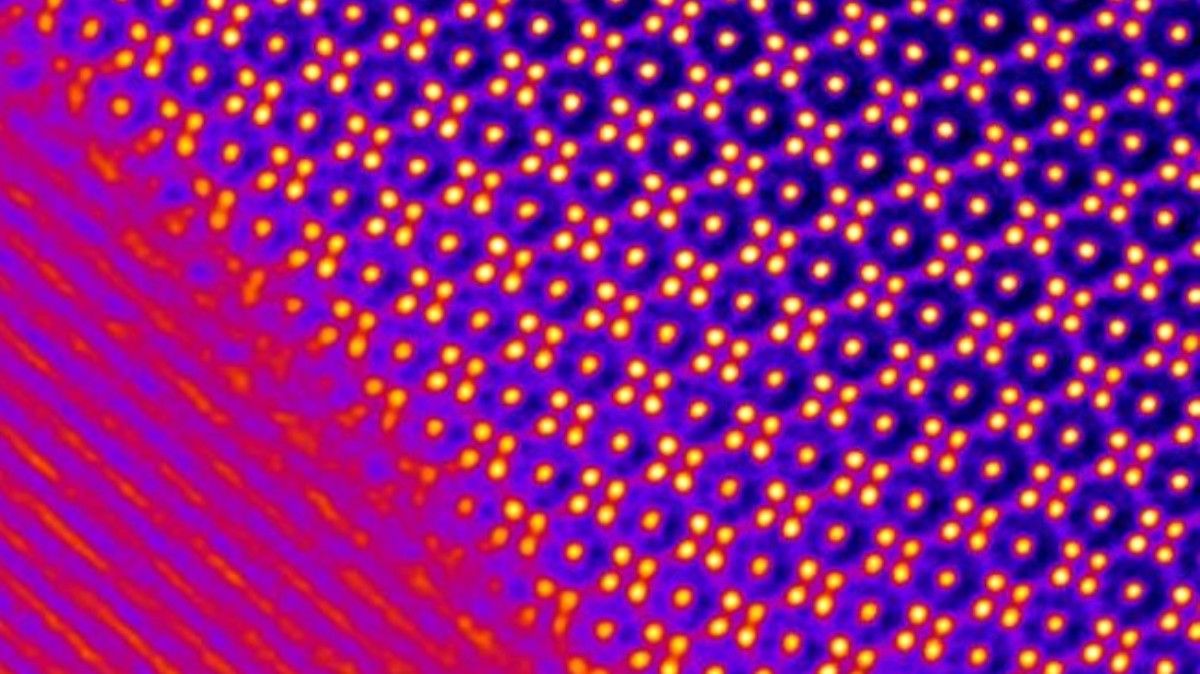
As our devices get ever smaller, so do the materials we use to make them. And that means you have to get really close to see them. Really close. A new electron microscope unveiled at the UK’s national SuperSTEM facility images objects at an unprecedented resolution, right down to the individual atoms.
SuperSTEM is funded by the Engineering and Physical Sciences Research Council (EPSRC) and has three electron microscopes that UK scientists can use. The newest was unveiled last month: a £3.7 million ($5.5 million) Nion Hermes Scanning Transmission Electron Microscope that EPSRC says is one of only three in the world. It can image objects a million times smaller than a human hair.
By Joseph Flaherty — Wired

As portions of the US are battered by snowstorms and shrouded beneath gray skies, a European startup is developing a light fixture that mimics the sun.
Each CoeLux fixture models the sunlight of a specific locale, be it the cool color and strong shadows of equatorial countries, the even glow of Mediterranean sunlight, or the slightly dimmer and warmer, but more striking patterns found along the Arctic Circle.
CoeLux fixtures use traditional LEDs, calibrated to the same wavelengths as the sun. However, accurately recreating sunlight also requires mimicking subtle variations caused by the atmosphere, which varies in thickness and composition depending upon where you are on earth. CoeLux uses a milimeters-thick layer of plastic, peppered with nanoparticles, that does essentially the same thing in your living room. CoeLux’s inventor, Professor Paolo Di Trapani hasn’t made any disclosures about how the nanotechnology works in practice, but an impressive list of peer-reviewed publications, industry awards, and testimonials from customers provide comfort that these devices actually work as advertised.
By Jason Dorrier –SingularityHUB
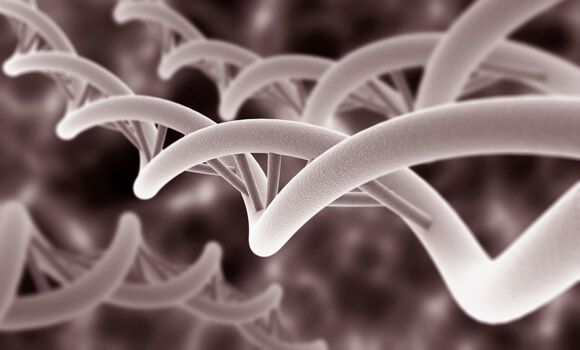
“No, no it’s not science fiction; it’s already happening,” said Ido Bachelet to a somewhat incredulous audience member at a London event late last year. Bachelet, previously of Harvard’s Wyss Institute and faculty member at Israel’s Bar-Ilan University, is a leading figure in the field of DNA nanotechnology.
In a brief talk, Bachelet said DNA nanobots will soon be tried in a critically ill leukemia patient. The patient, who has been given roughly six months to live, will receive an injection of DNA nanobots designed to interact with and destroy leukemia cells—while causing virtually zero collateral damage in healthy tissue.
Continue reading “Can DNA Nanobots Successfully Treat Cancer Patients? First Human Trial Soon” »
Quoted: “Legendary cyberculture icon (and iconoclast) R.U. Sirius and Jay Cornell have written a delicious funcyclopedia of the Singularity, transhumanism, and radical futurism, just published on January 1.” And: “The book, “Transcendence – The Disinformation Encyclopedia of Transhumanism and the Singularity,” is a collection of alphabetically-ordered short chapters about artificial intelligence, cognitive science, genomics, information technology, nanotechnology, neuroscience, space exploration, synthetic biology, robotics, and virtual worlds. Entries range from Cloning and Cyborg Feminism to Designer Babies and Memory-Editing Drugs.” And: “If you are young and don’t remember the 1980s you should know that, before Wired magazine, the cyberculture magazine Mondo 2000 edited by R.U. Sirius covered dangerous hacking, new media and cyberpunk topics such as virtual reality and smart drugs, with an anarchic and subversive slant. As it often happens the more sedate Wired, a watered-down later version of Mondo 2000, was much more successful and went mainstream.”
Read the article here >https://hacked.com/irreverent-singularity-funcyclopedia-mondo-2000s-r-u-sirius/